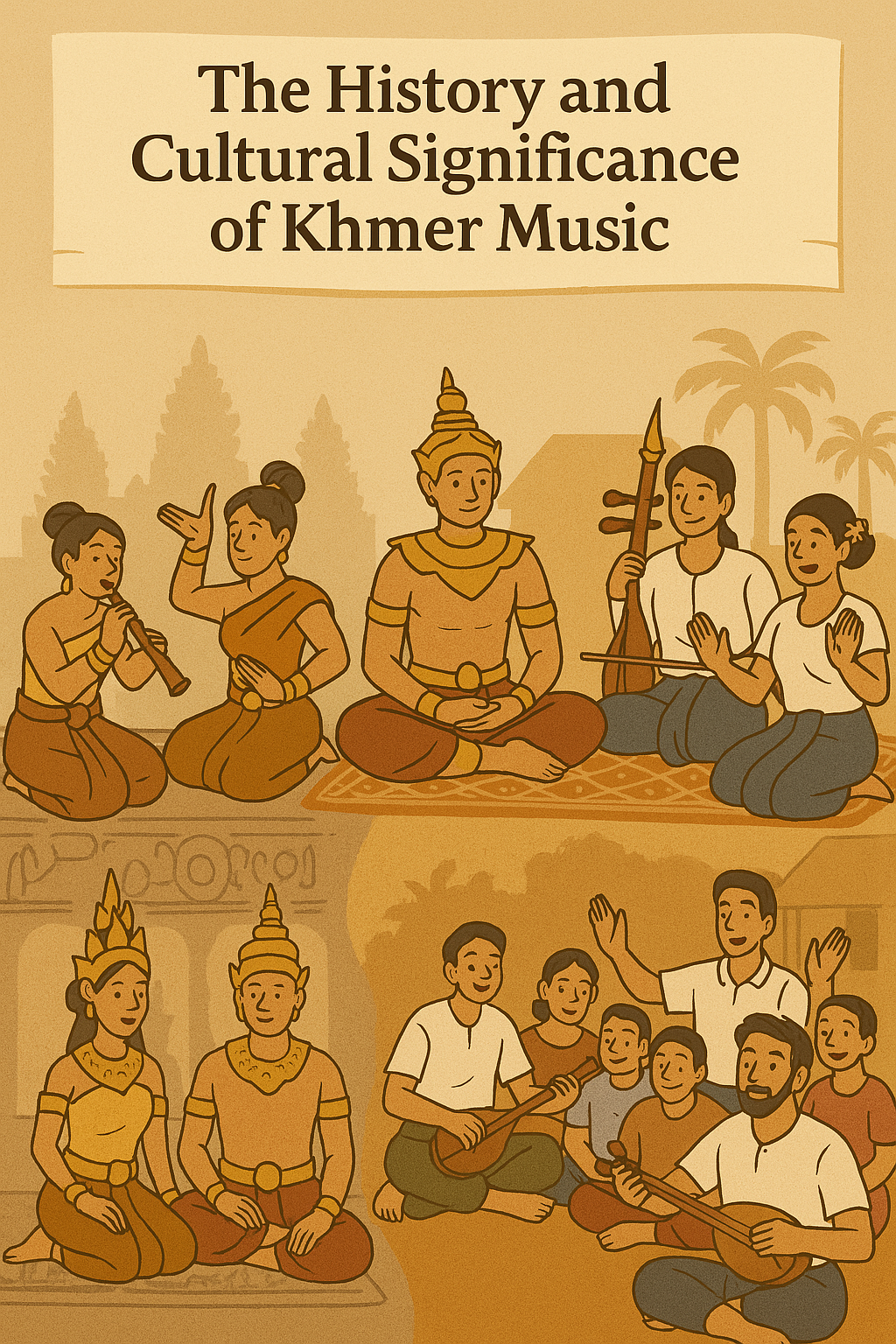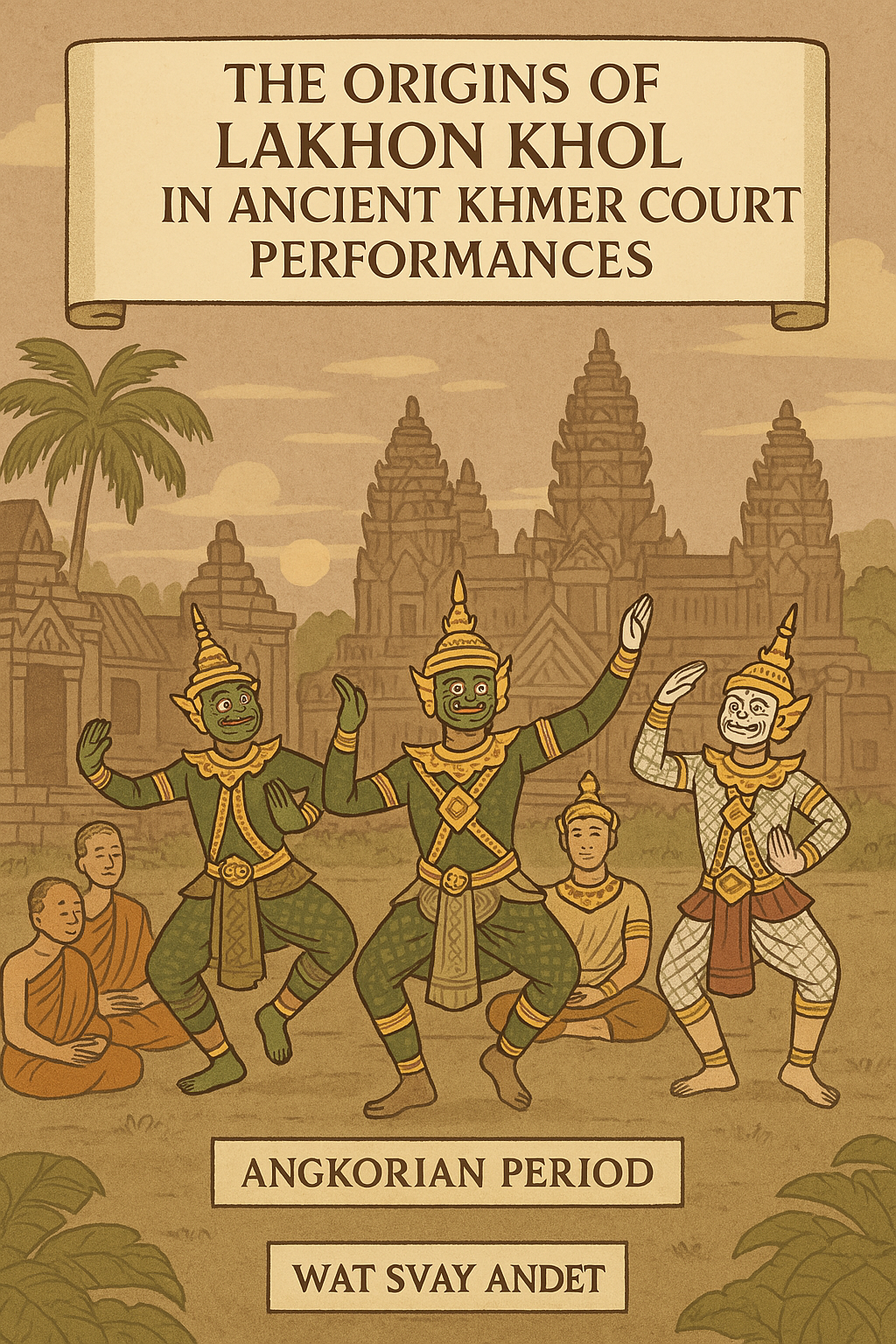In Cambodia, dance and music are not merely entertainment—they are sacred expressions of identity, spirituality, and community life. From weddings to funerals, temple rituals to national festivals, traditional performance arts infuse every significant life moment with rhythm, symbolism, and beauty. These art forms are living links to Cambodia’s ancestral past and vibrant present.
1. Wedding Music and Dance Traditions in Cambodia

Khmer weddings are elaborate, spiritual, and celebratory—often spanning two to three days. Music and dance are central components, symbolizing harmony, blessings, and cultural continuity.
Traditional wedding music includes:
- Pin Peat ensemble for ceremonial moments (e.g., water blessing)
- Mahori ensemble during joyful segments and bride procession
- Phleng Kar (ភ្លេងការ): A special wedding repertoire sung in poetic verses, invoking protection and fortune
Dance elements:
- Family members may perform blessing dances with lotus petals or candles
- Performers reenact mythical love stories (e.g., Preah Thong and Neang Neak)
The entire ceremony is designed to mirror the sacred union of cosmic forces, making music and dance both festive and deeply symbolic.
2. Funeral Chants and the Role of Musicians in Khmer Funeral Rites

Music at Khmer funerals is ritualistic and meditative, meant to guide the soul of the deceased into the afterlife.
Common elements include:
- Smot chanting: Melodic Buddhist verses recited by monks or spiritual practitioners to reflect impermanence and merit-making
- Pin Peat ensemble: Performs slow, solemn music to accompany the processions and cremation rituals
- Drums and gongs: Used rhythmically to mark transitions between ceremonial stages
Musicians are considered spiritual mediators, offering sound as a bridge between the earthly and spiritual realms.
3. The Use of Traditional Music in Buddhist Ceremonies

Traditional music is indispensable in Theravāda Buddhist rituals, especially:
- Ordinations (Bambuos)
- Water blessings
- Kathina and Pchum Ben festivals
The Pin Peat ensemble provides the musical backbone, setting the tone for:
- Processions of monks
- Offerings to the temple
- Chanting ceremonies
The interplay of music and prayer enhances the spiritual vibration of these events, allowing devotees to enter a meditative, merit-generating state.
4. The Connection Between Dance, Spirituality, and Animist Beliefs

While Buddhism dominates Cambodia’s spiritual landscape, animist beliefs still influence many ceremonial practices—especially in rural areas.
- Blessing dances (Robam Phuok) are performed to ward off spirits or invite fertility and protection
- Masked dances reenact ancestral legends and seasonal myths
- Ritual drum rhythms are believed to communicate with spirit worlds or deities
This integration of dance, rhythm, and spirituality reflects Cambodia’s layered cosmology, where divine forces are honored through expressive body and sound.
5. Folk Dances Performed During Khmer New Year and Water Festival

Cambodia’s two biggest national celebrations—Khmer New Year (Chaul Chnam Thmey) and Bon Om Touk (Water Festival)—are marked by joyful communal dancing and music.
Popular folk dances include:
- Robam Trot: Symbolic deer-hunting dance to chase away bad luck
- Chhay Yam: Percussion dance with comical dancers and drummers
- Lam Leav and Saravan: Circle dances accompanied by live folk bands with flute, drum, and plucked lute
These dances are highly participatory, meant to build unity and spread blessings across communities, with young and old joining in open-air spaces.
6. How Traditional Arts Continue to Influence Cambodian Pop Culture
Traditional dance and music continue to shape Cambodia’s contemporary art and pop culture:
- Modern pop and rap artists sample Pin Peat melodies or Mahori rhythms
- TV dramas and music videos incorporate classical dance choreography
- Fusion performances in Phnom Penh blend traditional dance with hip-hop or spoken word poetry
- Events like Cambodia International Dance Festival showcase both classical and modern interpretations of heritage arts
This cultural evolution proves that Khmer tradition is not frozen in time, but an ever-adapting force guiding artistic expression and national identity.
Conclusion: A Living Tradition of Rhythm and Ritual
In Cambodia, dance and music breathe life into ceremonies. They honor ancestors, bless unions, guide souls, and celebrate community. Whether through the haunting echo of a funeral chant or the joyful rhythm of a New Year’s dance, these art forms remain sacred vessels of memory, meaning, and identity.
Their enduring presence in daily life ensures that Cambodia’s soul continues to sing and sway—through centuries past and into generations to come.




